Where does espresso come from? Italian culture gave rise to the name espresso. It was initially used informally around 1900 and, when loosely translated, refers to a cup of coffee made just for you. Nowadays, it’s common to hear “expresso” pronounced or spelled incorrectly. In this post, we have summarized everything you should know to make the perfect espresso at home like a pro.
Table of Contents
ToggleEspresso coffee real ingredients
Approximately 7 to 10 grams (one or two tablespoons) of finely ground coffee are used to make an espresso shot, which is a 30- to 40-ml shot of pressure-brewed coffee. It takes around 25 to 30 seconds to brew, and when it is done right, crème, a rich, dark golden cream, will be layered on top.
This crème is one important indicator of a quality espresso.
Another definition of good espresso
Aside from being sweet, the ideal espresso also has a strong scent and flavor. Dark reddish-brown, silky, and thick should characterize the crema. The ideal espresso should taste great on its own, without any added flavors, and be robust enough to stand up to milk. It should have a long-lasting aftertaste that is flavorful and aromatic.
Selecting Great beans for great espresso

Superb beans are the basis for great espresso. To achieve the ideal balance of sweetness, aroma, and smoothness, fresh beans must be thoroughly roasted and blended.
Making the Perfect Espresso Cup
A crucial piece of advice I’d like to share with you is to use a different source than the espresso maker to pre-heat your espresso cup. The temperature of the water in the boiler will be lowered if you fill a great cup with it before brewing the espresso, which will result in inconsistent espresso extraction. To maintain heat and scent, the espresso cup should have robust walls and a tight mouth.
Styles of espresso
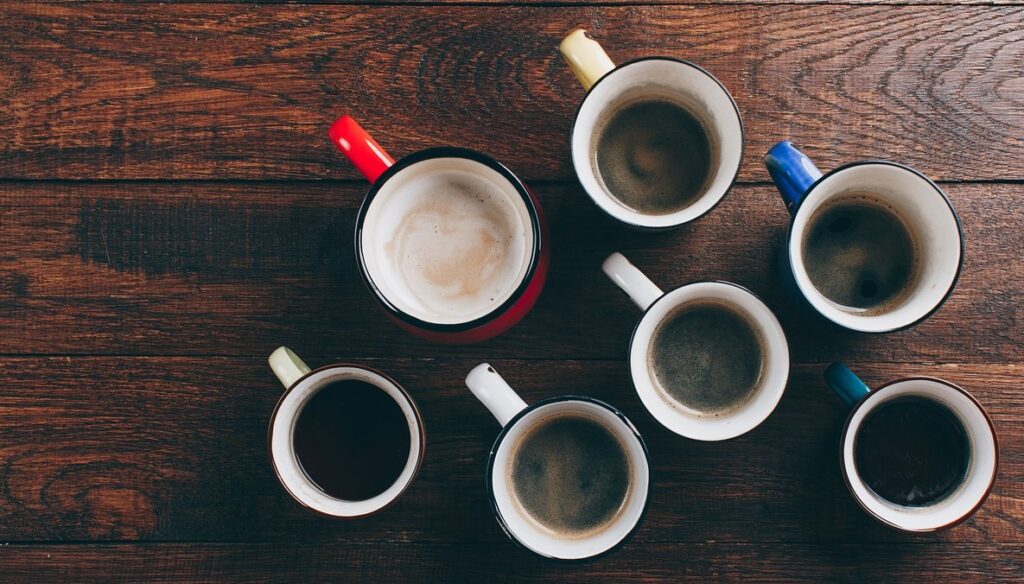
Additionally, espresso is more than just espresso. It takes numerous shapes. Short, long espresso is prepared differently depending on the location, but also, and most importantly, on the individual’s taste.
Long black espresso
The long black is the solution if you desire an espresso that is lighter than a lungo without the grounds being overextracted. Originating nations for this type of coffee were Australia and New Zealand. It is created by squeezing an espresso into a cup that has been heated up. The coffee becomes more diluted as a result, yet it preserves its balance and crema.
Americano style
An Americano is an espresso that has been extended with water after extraction, as many of us are aware. It becomes a little bit lighter than a long black when the crema evaporates. It gets its name from the GIs stationed in Italy at the close of World War II who had a tendency of adding hot water to their espresso to extend it.
To force the water through the finely ground and compacted ground beans, a true espresso machine needs to create at least 9 bars, or 135 psi.
Do you know that Espresso is neither blend nor roast
Even though there are bean combinations made specifically for espresso, the combination does not make the beverage espresso. This usual mistake is the result of the search of the ideal espresso blend. As follows The appropriate blends are required, according to certain roasters, in order to brew a good espresso, and we tend to agree that some blends are better suited to this purpose than others.
Some espresso aficionados believe that espresso must be roasted to an extreme dark level, yet the espresso roast varies from location to region. Espresso may be made from any roast. It’s really a matter of preference.
Roasting to Make the Perfect Espresso

According to your preferences, you may generally create espresso using a variety of roasts. While lighter, dryer beans will result in a more concentrated, caffeinated, and acidic beverage, darker, oilier beans will yield a less bitter and acidic coffee.
Consequently, the more aroma and sweetness you may lose by roasting beans for a longer period of time. The vast majority of espresso connoisseurs concur that medium roasts provide the greatest espresso because they provide a nice balance of sweetness and body. In truth, home roasting is enjoyable and satisfying, and we have covered it in great detail with detailed advice found in our roasting piece, All you need to know for successful home roasting.
Grinding to Make the Perfect Espresso
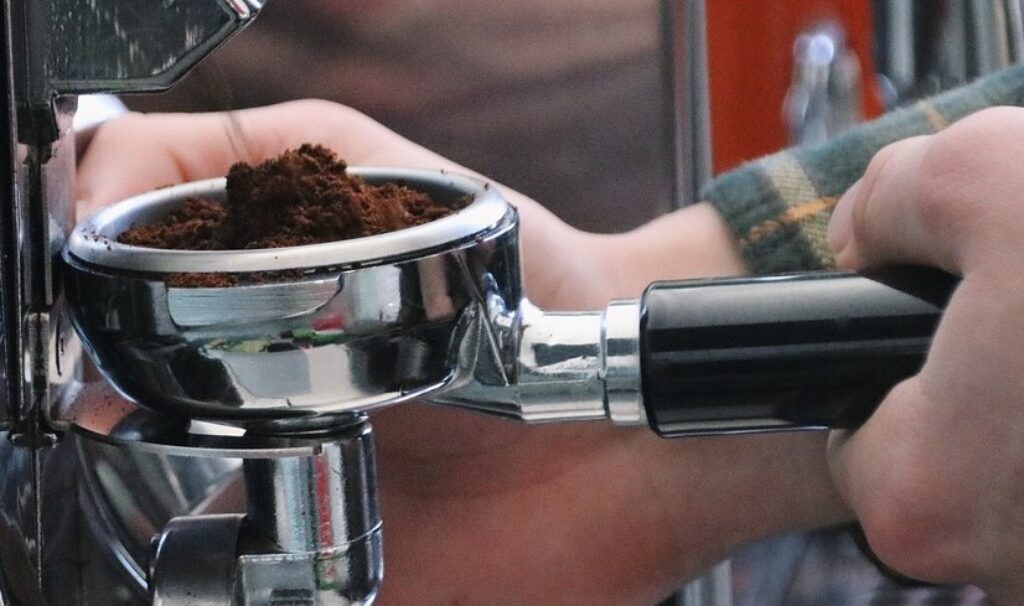
Most people are aware that to make superb espresso, you must be able to ground coffee very finely because you’ll be packing it snugly into the filter basket. Insufficiently fine grinds will not pack tightly and will let water to pass through them too readily. There is no need for a typical coffee grinder. To make espresso, it is therefore typically necessary to use a high-quality burr grinder. Conical burr grinders are also favored to flat burr ones because they produce more consistent particle sizes, endure longer, and don’t heat the coffee while they’re grinding. Many experts in the field of coffee deem a conical or flat hybrid blade to be the best option.
The Perfect espresso extraction and brewing timing
The ideal extraction time for one shot of espresso is between 25 and 30 seconds. This point is of utmost importance. To accomplish this, you must perform a number of things correctly, which we’ll explore in a moment.
You can change the extraction rate and the proportion of bitter flavors by adjusting the temperature. The right temperature depends on many variables.
The roast level of the coffee beans
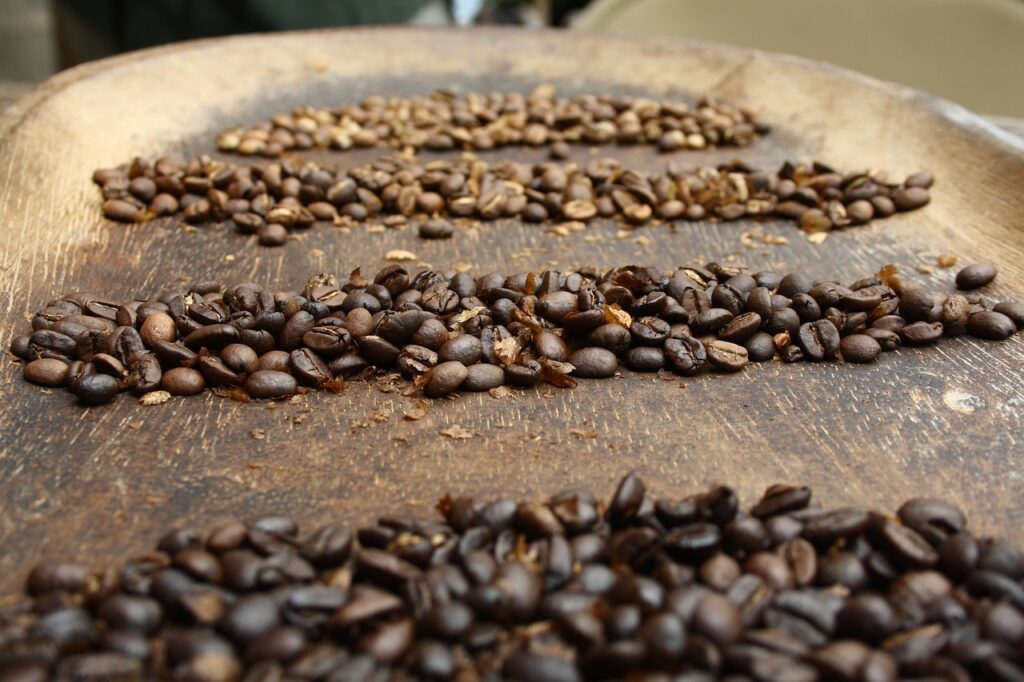
An over roasted bean’s bitterness is constrained by a medium temperature, whereas a lightly roasted bean’s sourness is moderated by a high temperature that makes it easier to extract the aromatic components.
1. The density of the bean:
A large bean, like pacamara, will burn more easily than a dense kind, like bourbon, which can withstand a high temperature better.
2. The dose of grounds:
The grammage directly relates to the decrease in temperature of the extraction water.
3. The length of the shot:
The more water that flows through the grounds, the greater the chance that they will catch fire.
While it’s generally true that you get what you pay for, some pricey machines actually brew inferior coffee than less expensive options while others outperform competitors with comparable prices. So, when deciding which machine to purchase, keep the following tips in mind.
When it comes to selecting your machine, we have put together an ultimate guide for doing so.
Espresso Machine Selection: Look at Several Options
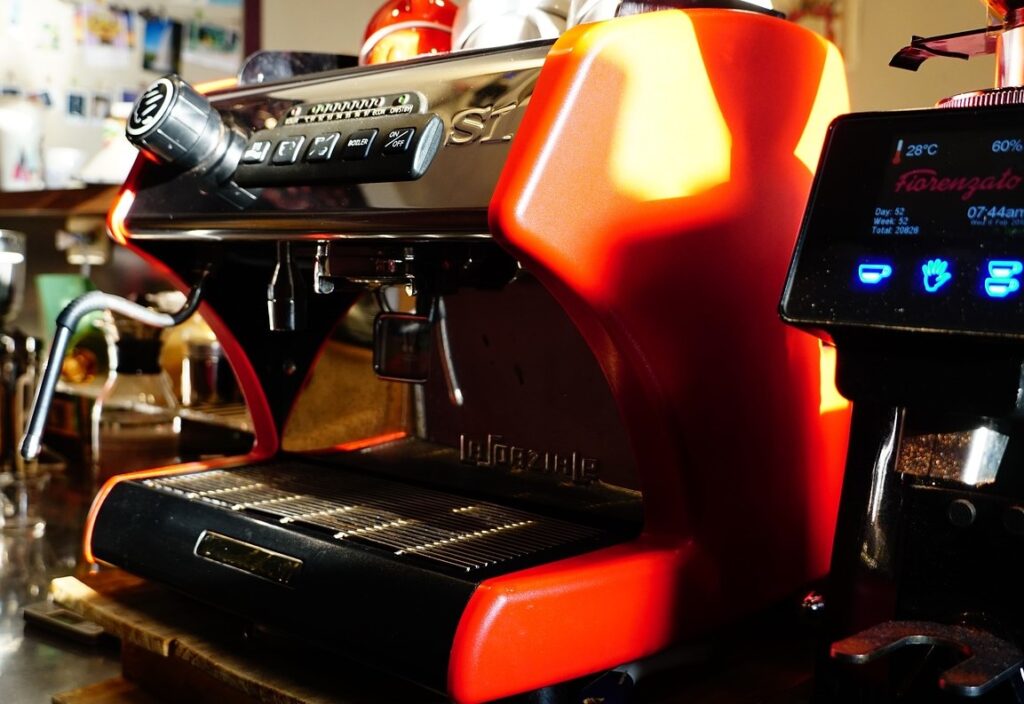
Be willing to research several machines before making a final decision. Decide how much you want to spend, and then look at machines not only in that price range but also in lower price ranges.
The total star rate and machine Reviews
It is really crucial to read product reviews. A machine should never be purchased if there are no trustworthy reviews available. Amazon.com and coffee-related websites like Coffee Geek and Home-Barista.com are two places we frequently turn to for reviews. Watch out for phony review websites created by Internet marketers who don’t know anything about coffee and only want to make money when you click on their link to purchase a machine when you look for reviews of a particular brand or model.
Find a Good Price at a Good Retailer

Whether you purchase something offline or online, make sure to shop around, check the return policies, and, if you’re purchasing something from a catalog or an online store, be sure to pay attention to the delivery fee before you place your order.
Some websites may provide you free gifts in exchange for making purchases from them, including free delivery, free coffee, free machine accessories, and more.
Coffee Machine Features and options

What kind of machine you purchase will determine the key characteristics, and there are many things to think about while choosing them for your machine
1. Metals manufacturing the machine.
The type of metal used to heat the water in almost all espresso machines can have an impact on the espresso’s flavor. Aluminum can leave a faint metallic taste in your espresso; brass and steel are preferable. All of the budget models employ aluminum since it is lightweight and affordable.
2. Machine Heating Systems
A steady water temperature is necessary for perfect espresso. The thermoblock used in “instant hot water” taps is the same one used by lower-end machines to heat the water. Thermoblocks’ temperature stability just cannot compete with that of a conventional boiler.
3. Machine Durability and weight
Watch out for machines with plastic portafilters. These are the wrong Choice.
4. Pump Pressure of espresso machine
Manufacturers will occasionally highlight a pump’s pressure as the most crucial component of a device. Although it may not always be the case, this is something to keep in mind. Although some people swear by minimums as high as 14 bars, the standard minimum pressure for making espresso is generally thought to be 9 bars. A stronger pump allows for a finer grind, which increases the coffee’s surface area and releases more of the taste of the beans.
5. Steam Wand of the espresso machine
Most other machines come with a steam wand, while stovetop devices often don’t. Some of the more expensive machines contain two boilers: one for steam production and the other for the water used to brew the espresso. The only difference between a double-boiler and single-boiler type is the speed at which cappuccinos and lattes can be made.
6. The machine Removable Water Reservoir
The wonderful thing about these is that you can drain the entire machine of water to prevent bacterial growth. It’s preferable to avoid leaving water in the machine for long periods of time for health reasons.
It is now time to make a purchase decision.
How to Pick the Right Espresso Machine
What makes a good machine though?
Should you get a semi-automatic one or a super-automatic machine?
Also, what about pod machines, manuals, and stovetops?
Let us know more about all of them to find the answer
Fully Automatic Machines
Simplest thing you can think of. Super-automatic espresso machines can create a shot of espresso with the simple push of a button. They grind whole beans, put the ground beans in the filter, tamp them down, and then brew the coffee. The Super-automatics or all-in-one machines include extremely powerful conical burr grinders with gear reduction systems and numerous settings to regulate the strength of your brew.
The frothing adaptor that attaches to the steam wands makes it very simple to steam and froth milk. In spite of the fact that these machines are the simplest to use, they are also the priciest ones available. You do lose some control over the brew pressure and tamping pressure as a result of everything being fully automatic, but this may be made up for with other features that enable you change the grind settings, Doser settings, and serving size.
Semi-Automatic Machines
Because they are moderately priced, create good coffee, and are very simple to use, semi-automatic machines are quite popular for use at home. The fundamental distinction between a semi-automatic and a fully automatic machine is that the latter does not grind the beans. Therefore, you must either buy a coffee grinder or buy beans that have already been ground. Additionally, some modern full-automatics rinse and clean themselves, in contrast to semi-automatics that require cleaning and rinsing.
However, some models use a thermo-block system, which heats water instantly and reduces wait time. In general, semi-automatic machines use a boiler to heat water as it passes from a separate water tank. The “On/Off” switch on some machines must be pressed once to begin extraction and again to stop it. Other semi-automatics simply require a single button press to start the extraction, and they will shut off on their own when a predetermined amount of time has passed, just like a programmed washing machine.
Another one here , Frothing with semi-automatics is simple with some machines but can require some skill with others. This in fact depends on whether the machine comes with a frothing adaptor or not. The adaptor makes frothing your milk easy while frothing with a traditional steam wand takes a little bit of practice to perfect.
Manual Machines
Exact replicas of the original prototypes developed to provide a reliable and tasty cup of espresso, these machines have a classic appearance and function.
These machines, which are also known as piston-style machines, were the first to employ a manual pump capable of producing the 9 atmospheres of pressure required to drive the water through the condensed grinds and create a good espresso. For individuals who love the process and work involved in preparing a cup of espresso the old-fashioned manner, such machines are typically best advised.
However, compared to automatic machines, these equipment are more difficult to operate and call for more expertise. They are unsuitable for serving or hosting large groups due to their limited water tank, to give more specifics. Also Cleaning and maintaining manuals is rather simple, but to remove tarnishing and fingerprints from the outside finishes—typically brass, chrome, or copper—special cleaning chemicals are needed. The fact that steam wands and frothing adaptors are common and strong enough for domestic use is one of their advantages. However, it’s also important to remember that squeezing the handle down to drive water through the espresso grounds does demand some arm power, and the consistency of the draw is essential to brewing a good cup of coffee.
Pod Machine
Espresso machines with pods can be fully or semi-automatic. Because they always use “pods” of prepared ground that you discard after use, these machines are known as “pod” machines. You only need to purchase more pods to create more coffee; there is no grinding or tamping required. The biggest drawback of a pod machine is that you can’t blend your coffee or change the amount or fineness of the grounds to alter the flavor. Additionally, you must purchase the brand of pods they use specifically for each.
Stovetop Machines
This espresso machine is Stovetop espresso machines are a great alternative for anyone on a tight budget who yet want to enjoy a cup of home brewed espresso. The primary drawback is that inexpensive machines can’t provide the pressure needed for the best espresso, but if you don’t want to spend more money on a machine, that shouldn’t be a reason to stop drinking espresso completely. This option is excellent for camping because these items are very basic, easy to use and maintain, and don’t need energy. They are quite well-liked in Italy as well.
You should always keep your espresso maker dry and clean, regardless of the brand or price.
What maintenance procedures for espresso machines
- Cleaning an espresso machine on a regular basis
- After each usage, you should wipe your steam wand clean and clear it of any leftover liquids.
- After every brewing session, you should flush your equipment with water to remove any unintentionally adhered particles.
- You should use a good known coffee detergent to rinse, scrub, and wipe the portafilter and basket after each brewing session.
- Never use a dish detergent on any component of your machine that will come into touch with coffee because these products are made to dissolve oils.
- A clean water back flush should be performed after 15 shots and at the conclusion of each brewing session.
- other regular maintenance duties for any espresso machine
- To clean the group head, you want to flush your back with a coffee detergent.
- You should only scrub your portafilters and baskets after soaking them in a mix of hot water and coffee detergent for at least 30 minutes.
- If you can, pull the dispersion plate and shower screen off the group head and soak and scrub them before replacing them.
Let’s look more closely at the various brewing variables and information that influence the quality of your coffee extraction.
Brewing Temperature

The thermostat in your machine regulates this. All reliable appliances heat water to the recommended range, which is roughly 190 degrees. While coffee should be served at a temperature of about 160 degrees “in-cup,” Lips will feel heated but not scorching at this temperature. Preheating the cup will help you reach the right “in-cup” temperature. A cup warmer on the espresso machine, hot water from the espresso machine, or even hot water from your faucet are all options for heating the cup.
The brew group, which consists of the portafilter and group head, should also be heated. To achieve this, I advise you to pour a tiny amount of hot water into the cup while the portafilter is still in place and run it through the group. The second attempt is usually better than the first, so it is the most effective approach.
Espresso machine Brewing Pressure
This is the amount of pressure developed when extracting the coffee. We look at a maker with approximately 9 bars as being the optimum choice. You may have noticed that some home machines show pressure ratings of 15 or even more bars. This is an indication of the maximum pressure the pump is capable of producing, but machines are designed these days to not allow any more than 9 to 10 bars maximum. Remember always that the resistance you create in in the brewing group directly affect the extraction level of your coffee, so by having less resistance in the brew group you will get weak fade and under extracted espresso.
And by correctly grinding and tamping your coffee, You can easily produce and regulate this resistance. Thus, a finer coffee grind and a strong tamp pressure cause greater resistance, which aids in producing that thick, golden espresso.
Tamping Pressure

This is the pressure you should use to firmly pack the coffee grounds into the filter basket. You utilize a “tamper,” which is typically included with machines. The fundamental method of tamping involves lightly tapping the portafilter with the tamper, applying about 30 kilograms of level pressure, and finishing with a twist to smooth the top of the exposed coffee grounds. Additionally, it’s crucial to lean into the tamp rather than attempting to muscle it with your arm. You will receive a more consistent tamp as a result.
Now, some modern machines just need a light tap since they have “pressurized filter handles” that are intended to produce enough resistance.
Grinding your beans
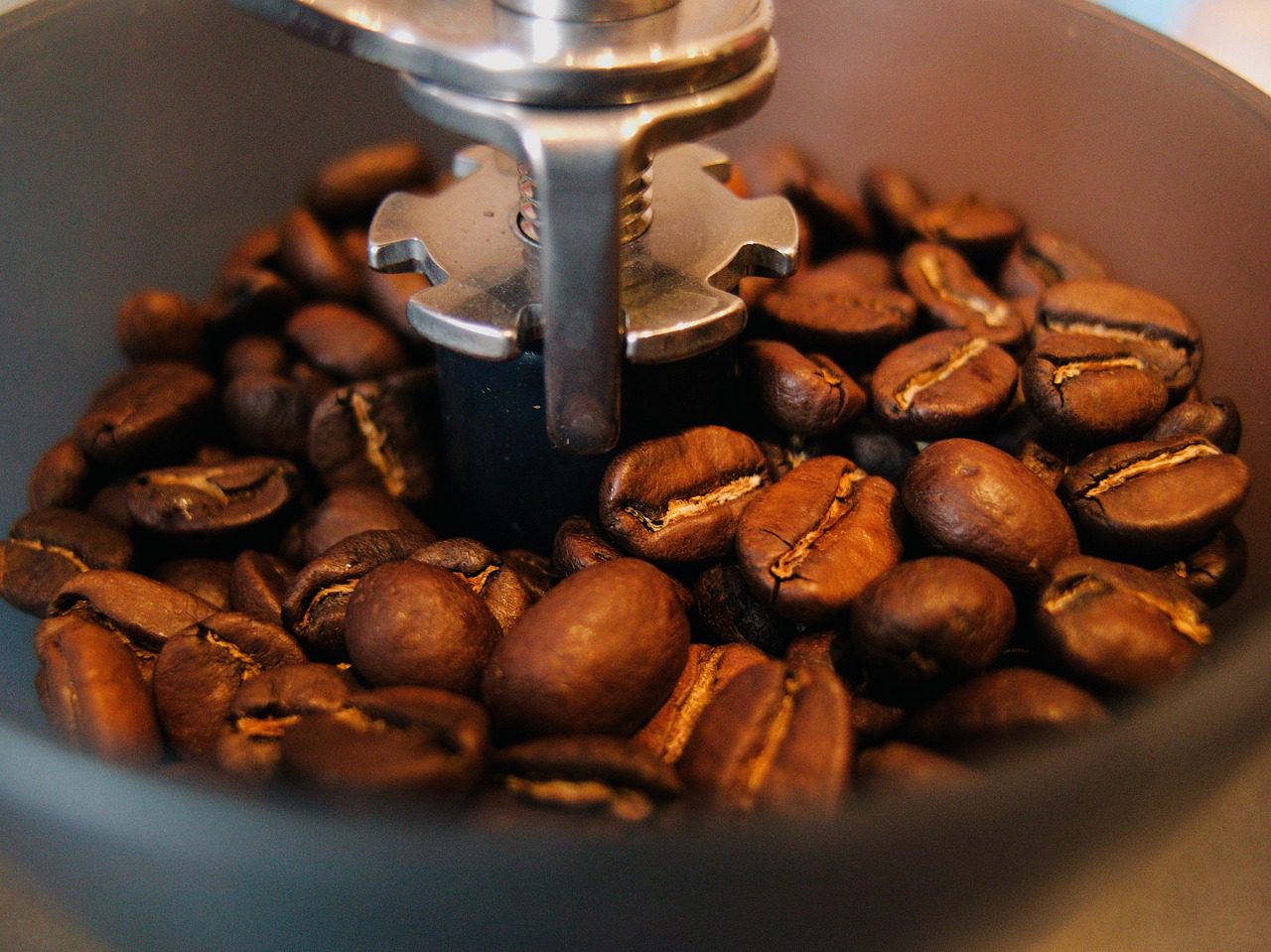
Inadequately ground beans can clog the dispersion screen, gum up the grinder burrs, and prematurely wear them out. They can also turn a great bean into a bitter cup of coffee. When everything else stays the same, you will see that the extraction time will decrease as your beans get older. This is because the bean’s flavor is evaporating, which reduces resistance to being tamped. Regrettably, this is a clear indication that the flavor is also evaporating
So, in the majority of grinder settings The optimal espresso grind setting on a grinder will typically be found to be between 3 and 8 on the grinder’s index when calibrating a grinder. The grind is finer the lower the number. But you must constantly keep in mind that a setting on one grinder won’t always produce the same results as a setting on another. Therefore, the grind fineness must remain constant in order to consistently create great coffee. Variation will result in drastically varying extraction times, which will lower the quality of the coffee.
Secret tips for making your first great shot.

Once you have your espresso maker, proceed.
You are now prepared to fire your first, flawless shot.
Espresso extraction is an artistic but scientific process. Understanding the intricacies of your espresso machine, grinder, and coffee is the art. The science typically refers to using particular methods for the coffee roast, grind size, tamping pressure, brewing temperature, and extraction time.
Starting with some basic methods is the best approach to learn how to brew espresso. Additionally, as you keep making espresso, you’ll eventually pick up the “art.”
Volume & Weight
A single shot of espresso, or 50 ml, of coffee that was extracted from a maximum weight of 10 grams of well-tamped coffee grounds in less than 30 seconds is the definition of the “perfect shot.”
Double espresso
What exactly is a double espresso shot?
To make a double shot of espresso, follow the steps you’ve already mastered, but use 14 grams (2 tablespoons) of coffee grounds as opposed to 7 grams. The extraction time must stay constant at 20 to 25 seconds; this is crucial.
Finally, These General Steps are as the following:
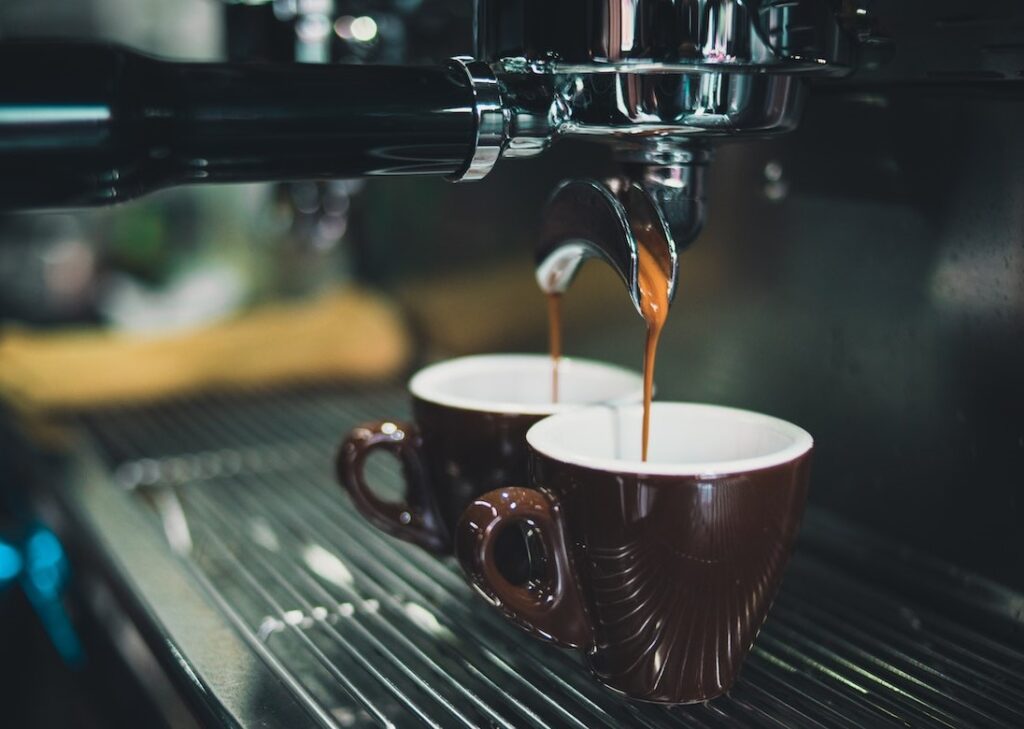
Warming up
It’s best to start with a clean machine, portafilter, and cup. It’s also crucial to thoroughly preheat the cup and brew group before beginning the extraction process since otherwise, they will absorb heat from the coffee and affect its flavor.
Grinding
Once the coffee has been ground, pour one tablespoon, or 7 to 9 grams, of the ground coffee into the portafilter basket and tamp as we previously discussed.
Look at the coffee that has been tamped; it should be even and compact. Make sure the surface seems polished and that any loose coffee grounds at the top of the rim are brushed off to avoid any uneven surfaces that could interfere with the extraction.
- Serving as cup
- Tamping
Start to Pre-heat the cup the beverage will be served in.
Espresso brewing
Your heated cup should be put under the beak or dispensing nozzles of the portafilter after it has been attached to the machine.
Enjoying your cup
Press the pump button while keeping an eye on your watch and paying close attention to your extraction. If done correctly, the coffee will start out dark and transition to a golden-brown, foamy concoction that will softly trickle into your cup. Even “mouse tails,” which are slender, curling streams of espresso that appear to be barely holding together, might be visible.






